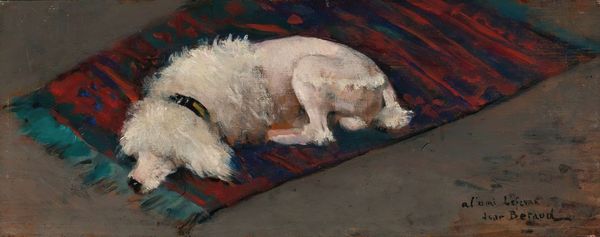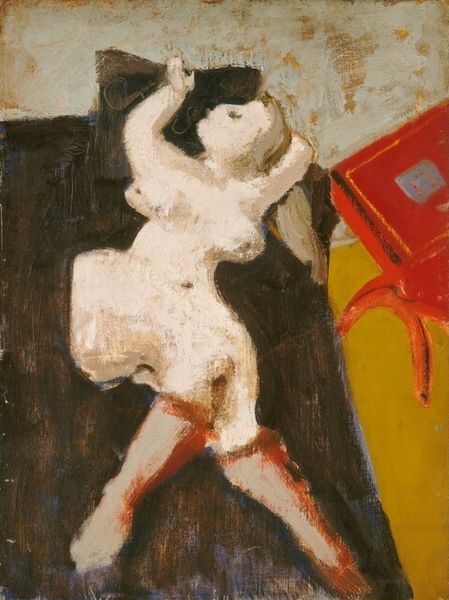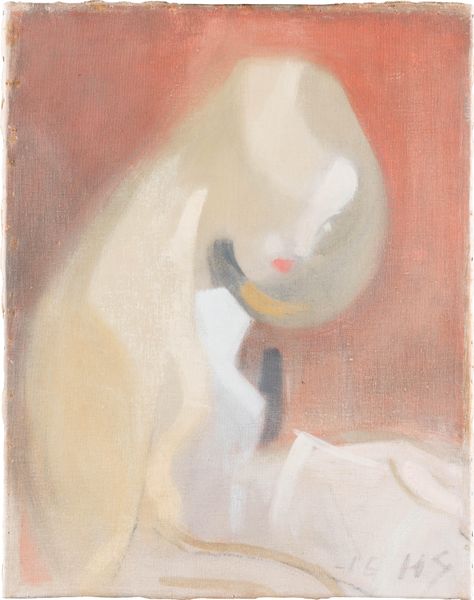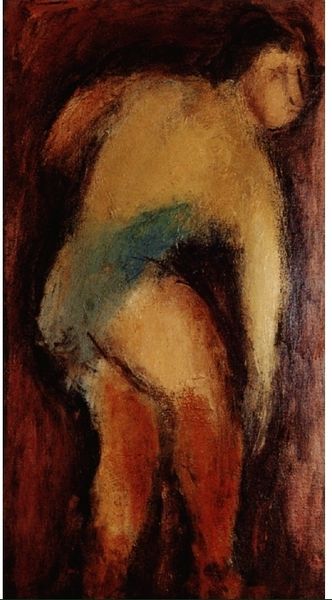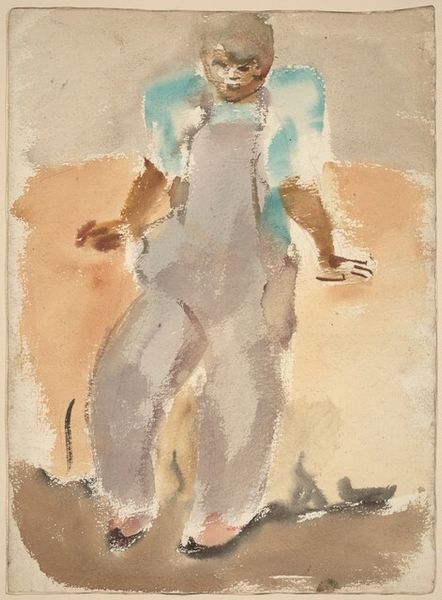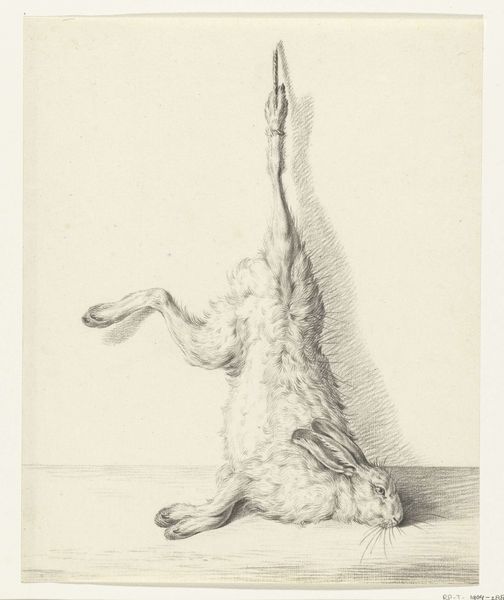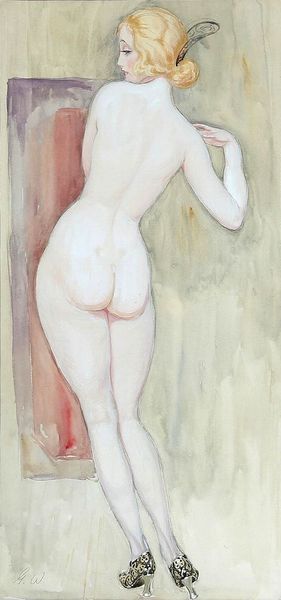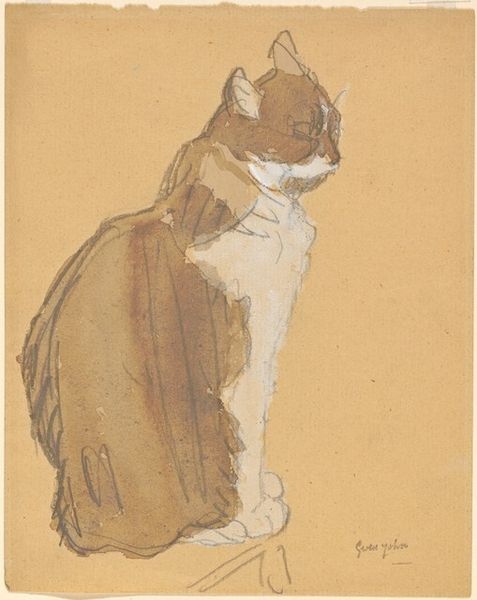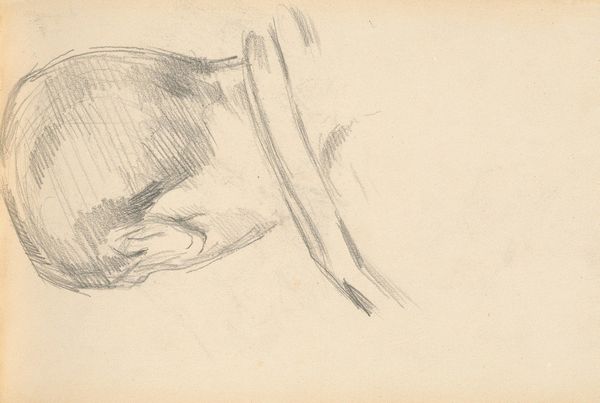
painting, oil-paint
#
animal
#
painting
#
oil-paint
#
charcoal drawing
#
oil painting
#
vanitas
#
animal portrait
#
watercolor
#
realism
Copyright: Public Domain: Artvee
Curator: Let’s turn our attention to Albert Edelfelt's oil painting from 1873, "Dead Hare, Study". Editor: The immediacy of it strikes me. It’s surprisingly…tender. Despite the subject, there's an undeniable softness. The brushwork seems almost caressing. Curator: Precisely. Observe how Edelfelt utilizes light. It isn't distributed evenly. Instead, it pools, accentuating the form of the hare and guiding the viewer’s eye along its body. Semiotically, the stark contrast suggests a clear focal point and creates depth despite a rather limited palette. Editor: Speaking of the hare itself, its positioning is quite loaded, isn't it? Hare is prey—powerless and mortal, an emblem of sacrifice and vulnerability through cultures, evoking certain feelings of sadness or pity in some. Consider also the tradition of hunting trophies… There’s a story suggested here, even in this 'study.' Curator: The "study" designation is crucial. It frames this not as a complete narrative statement, but as an investigation. He's parsing form, light, texture. This dissection reveals itself as a play in contrasts—warm versus cool tones, rigid silhouette with supple fur, life opposed to its absence. Editor: So the emotional resonance is secondary to this structural exploration? Or perhaps, he lets those resonances seep into a work not fully constructed and shaped. It becomes quite fascinating that the symbolic implications emerge even through his close examination of formal elements, despite him not intending them to. Curator: That intersection becomes quite complex here in a composition that contains an unadorned composition which pushes the focus back to the fundamental components of art-making and how one's emotions, assumptions, or culture begin to subtly impact those processes. Editor: Well, regardless of intent, the painting serves as a strong testament to how something can carry profound meaning, and elicit varied emotional responses regardless of whether they're purposefully coded. Curator: A stimulating insight; it reflects the continuous conversation that happens with and around an artwork—intention or otherwise.
Comments
No comments
Be the first to comment and join the conversation on the ultimate creative platform.
